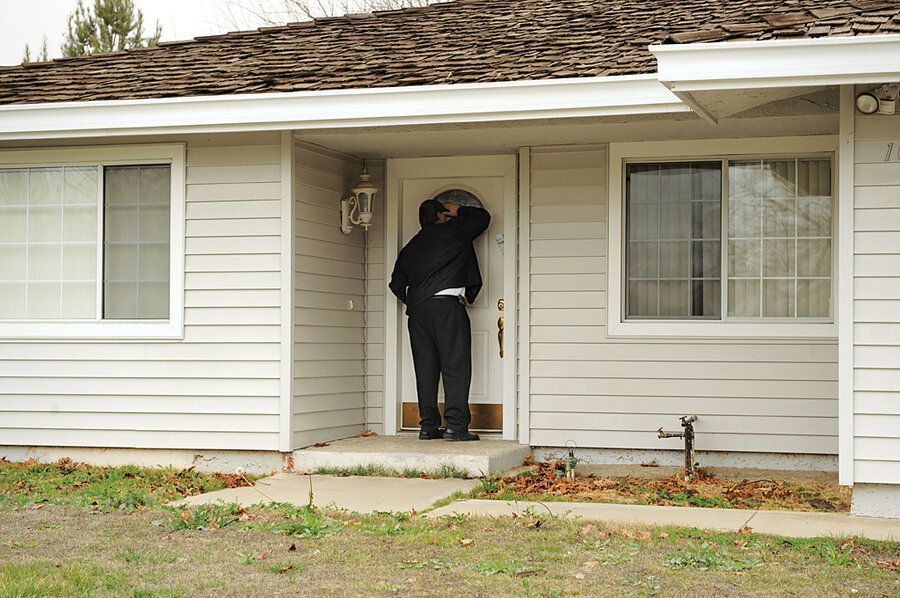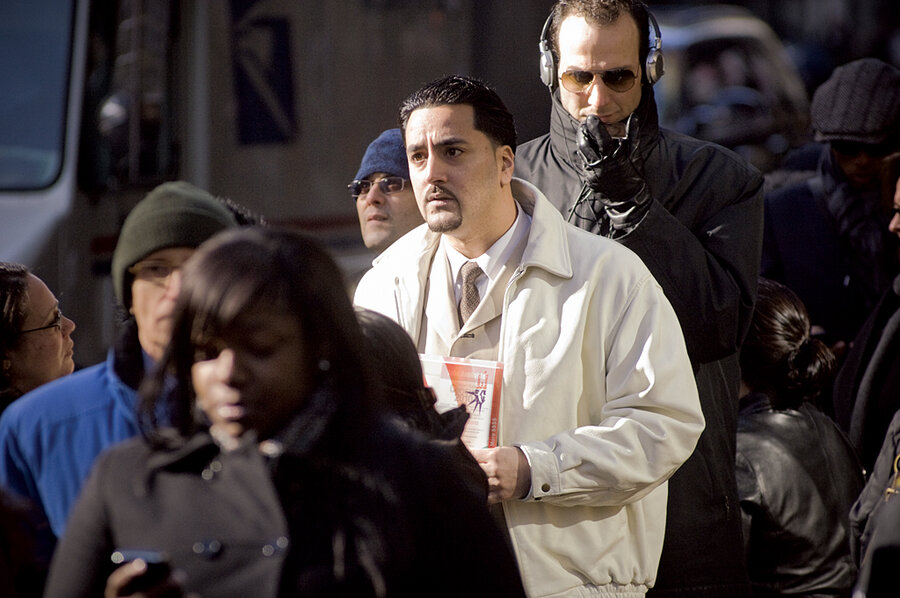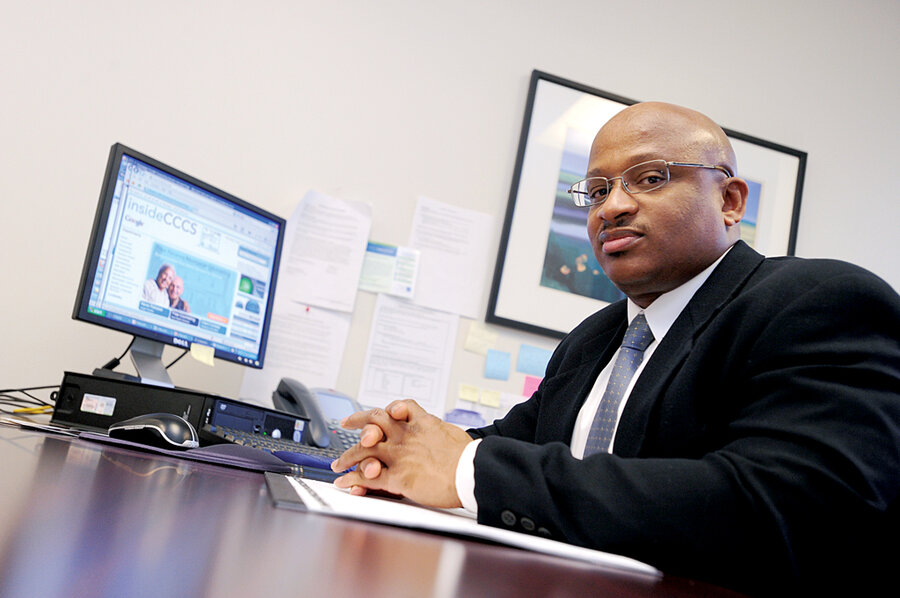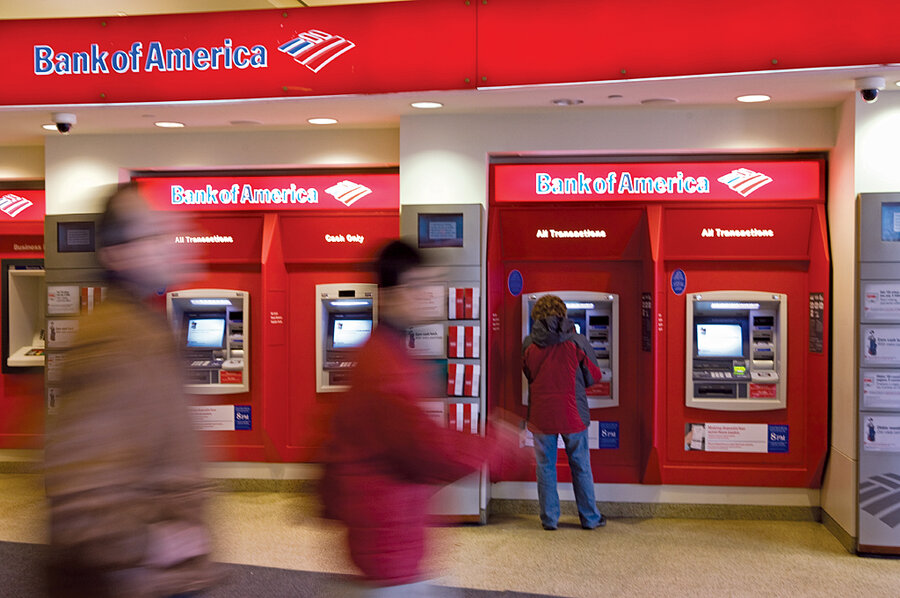Post recession, a new era of consumer caution
Loading...
As a credit counselor, Rodney Tullie has been helping consumers manage debt problems for two years. That’s been long enough to witness, from a front-row seat, what some are heralding as the end of an economic era.
At Consumer Credit Counseling Service of Greater Atlanta, the nonprofit where Mr. Tullie works, client rolls swelled from 596,000 in 2008 to 754,000 last year. Many of those seeking help have lost jobs or homes. Most telling, however, is that Tullie’s average client still works full time but has endured a painful pay cut in recent months.
“One day, I spoke to two people back-to-back who had each had a 50 percent pay reduction,” Tullie says, recalling a day on the job in January. “They hadn’t changed jobs [or seen their hours reduced]. One person had been on his job for eight years, got a 50 percent pay reduction, and was happy because he still had a job.”
Call it the new age of the tightened belt. One year after the Dow Jones Industrial Average bottomed out at 6547, a 12-year low, Americans are still clinging to money as if nothing has improved since then. A 50 percent rise in the Dow since March 9, 2009, has ended the panic but not eased the worry.
Some observers wonder whether, in fact, a 60-year party has come to a close. Since the end of World War II, Americans have enjoyed rising rates of homeownership, expanded access to credit, and improved living standards by many measures. But now consumers are spending less because, it seems, they have no alternative. Their employers are shedding jobs and cutting wages. Their lenders are withholding the inexpensive credit that had for decades been the mother’s milk of a growing economy. Home equity – a reliable source of borrowed capital for homeowners through the mid-2000s – has utterly vanished for millions in a coast-to-coast housing downturn.
These forces have buffeted Ivy Hest, a recent college graduate, in ways that would have sounded all too familiar to her grandparents’ generation. She grew up in Boca Raton, Fla., where she went to private school, ate most family meals from restaurants, and went to the movies often. Then her parents lost their home in foreclosure. Now an unemployed community organizer in Boston, she has become extra cautious with her own money.
A fun weekend night involves having friends over for a potluck dinner and a board game. Meeting a friend for lunch sometimes means homemade turkey sandwiches in a park. She’s lived with three roommates for years, but she and her partner are nonetheless hesitant to buy a home.
“In terms of planning, we’re saving a lot,” Ms. Hest says. “Even though the economy is prime for buying foreclosed properties, we’re not too excited about buying anything before we’re stable.”
When a generation gets truly scared about finances, new traits can take root for the long haul, such as the thriftiness among those who grew up during the Great Depression, says Lloyd Klein, a sociologist at St. Francis College and author of “It’s in the Cards: Consumer Credit and the American Experience.”
“This is going to be a generational impact” akin to the Depression’s effects, he adds. “The individuals who’ve been downsized or have been struggling with credit will basically be fairly conservative with consumer credit because of their experience and because savings are limited and money is not plentiful.”
This change, if it is permanent, would take Americans back to what prevailed for most of the 20th century. Americans saved when they could and spent down savings in hard times, says Martha Olney, an economist at the University of California, Berkeley. Thus, Americans spent as much as they earned during the Great Depression and their savings rates climbed as earning power grew after World War II. When two-income families became more commonplace in the 1980s, Americans were on average saving 8 percent or more of what they earned. Saving was a sign of doing well.
The mid-1990s, however, began to invert these behavioral principles. Asset bubbles, first in the stock market and then in the housing market, made Americans feel richer and led them to borrow at attractive rates, so they had less incentive to save. Then as Americans saw their finances take a hit in late 2008, they began saving at dramatically higher rates. In a novel twist, saving became a sign not of doing well, but of financial strain.
“The world changed when housing wealth disappeared,” says Dean Baker, codirector of the Center for Economic and Policy Research, an independent think tank in Washington, D.C. “Now we’re getting savings rates of about 5 percent, which is still relatively low by historic standards. If you go back to the ’50s, ’60s, and ’70s, savings rates were 8, 9, sometimes more than 10 percent. So my expectation is that we are in a permanently different world [in terms of spending] because ’95 to 2007, when savings rates dropped to almost zero, was the aberration.”
Even if they want to, Americans can’t jump-start their old habits. Because home equity has vanished, consumers can no longer treat their homes as ATMs, says Professor Olney, author of “Buy Now, Pay Later: Advertising, Credit and Consumer Durables in the 1920s.” That may mean consumer spending drops from 70 percent of the economy today to something closer to 62 percent, where it was before home equity borrowing started soaring in the 1990s. Such a development would involve a drop of more than $1 trillion a year in consumer outlays. Belt-tightening on a long-term basis could shutter many a business, Olney says, such as retail stores that got used to selling granite countertops to a middle-class clientele.
Not everyone buys the thrifty-nation hypothesis. When 64-year-old retiree and widower Larry Kelley saw his portfolio start tanking in 2008, he defied his financial adviser, cashed out a lump sum of his investment portfolio, and took a trip to Europe. He’d rather spend it than lose it, he says, and his annuities give him confidence that he won’t outlive his money. “I’ve worked my entire life for it,” says Mr. Kelley, who used to handle financial operations for Raytheon and lives in North Andover, Mass. “I’m going to spend some of it.”
Credit an American birthright?
Credit has been part of America’s growth since before the republic, says Lendol Calder, a historian at Augustana College and author of “Financing the American Dream: A Cultural History of Consumer Credit.” The Pilgrims sailed to Massachusetts Bay on credit; Thomas Jefferson died owing debts for wine and fine clothing purchases. In 1890, the average American had a mortgage debt equivalent to two years’ salary. Even in the 1930s, Professor Calder notes, Americans widely took advantage of financial innovations to borrow and consume.
“Americans have always regarded credit as a wonderful thing,” he says. “And they’ve never had to be talked into using it.... The majority view is that ‘I’m a responsible person. I’m trustworthy, and I’ll pay it back.’ So when innovations [in credit] come along, they’re seized upon.”
Others are similarly skeptical that recent adjustments will have staying power.
“It’s not that people have decided to become thrifty,” says Steve Weisbart, chief economist for the Insurance Information Institute, an industry research organization based in New York City. “It’s that they’re going to become bankrupt if they don’t repay their loans.”
It’s possible that America’s economic future lies somewhere between today’s austerity and yesteryear’s profligacy – and it may affect different groups in different ways.
A lesson for the young?
Young people, under the age of 30, could be the ones who take long-term lessons of the market crash and the great recession to heart, say Olney and Professor Klein. Not overly set in their financial ways, they’re able to make lasting adjustments. Having seen their parents’ plans to sell homes and retire in style go up in smoke, they may have gotten more serious about funding Individual Retirement Accounts and other retirement vehicles.
Even senior citizens who left the workforce long ago have recently made money-saving changes that they don’t plan to shed anytime soon. Rosemary Hughes of Andover, Mass., lives in a home large enough for 30 family members to dine together at the holidays, and she vacations twice a year. But her investments took a hit when markets crashed, and she now finds it difficult to pay her property taxes, which exceed $11,000 a year. Hence this fall for the first time, she began volunteering at Town Hall to earn credits toward her tax bill. She’s also increasingly vigilant about spending, looking for discounts wherever she can find them.
“I can stay in my house for a while longer,” she says. “I just don’t know how much longer before I’m forced to, you know, sell and go into something smaller.”
The poor also talk of making permanent changes. Pew Research Center surveys last year found that as stock markets began to recover from their lows, hopes for improved personal finances rose for middle- and high-wage earners, but they dimmed among people earning less than $30,000 a year.
“People say things – they don’t want any more credit cards, they don’t want any more credit period, or they want to move into smaller houses with smaller mortgages,” Tullie says. “But people can’t get out of their houses [due to a weak housing market]. So that will all be borne out when things change.”
At the top end of the economic spectrum, caution persists for other reasons. Don Humphreys provides financial advice to wealthy professionals and business owners in the New York City area. He finds his clients are investing more conservatively (more bonds, fewer stocks) than a year ago. They’re also cutting back with fewer meals in fancy restaurants, less lavish vacations, and so forth. While their incomes generally haven’t suffered, he says, they’re taking a wait-and-see approach to the economy. That means they’d be willing to ramp up spending and take more risk in investing if they felt more certain about what the future holds.
“There’s definitely been a change in attitudes, at least in what I would call the short term,” Mr. Humphreys says. “In general, they’ve gotten more risk-averse…. They say it’s a long-term change. But if we experience a three- or four-year bull market, we’ll see how that holds out.”
Long road to recovery
However it shakes out, it’s apt to be a long haul. Klein posits that maybe the postwar boom will turn out to be an anomaly of economic history as outsourcing and contract-based employment without salary or benefits become increasingly the norm. Mr. Baker sees a brighter horizon, lit by a dollar so weak that cost-conscious manufacturers will ramp up on US shores – though perhaps not until another decade has elapsed.
Meanwhile, household budget cutbacks may keep getting deeper. Olney and Baker expect average savings rates to climb perhaps another 3 percent to about 8 percent of earnings, if not higher. Such developments might bode well for Americans’ long-term sense of financial security – but it will slow the economy’s uncertain progress toward recovery.









